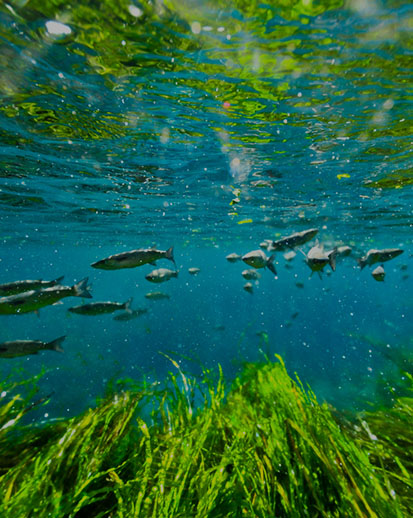Waste & circularity
We are committed to securing the future availability of natural resources and unlocking more value from the limited resources we have. We monitor and improve our own operational impact through resource efficiency improvements, enabling our customers to deliver sustainable and circular solutions, and advocating the transition to a circular, bio-based economy.
|
|
Aspiration |
|
2022 |
|
2021 |
||||||
|---|---|---|---|---|---|---|---|---|---|---|---|---|
|
|
|
|
|
|
|
||||||
Renewable & secondary raw materials1 |
|
|
|
|
|
|
||||||
Renewable raw materials (% of spend) |
|
|
|
15% |
|
15% |
||||||
|
|
|
|
|
|
|
||||||
Waste |
|
|
|
|
|
|
||||||
Total process-related waste efficiency improvement |
|
> 0% |
|
3.0% |
|
7.5% |
||||||
Absolute landfill reduction versus 20202 |
|
-50% by 2030 |
|
44% |
|
- |
||||||
Waste recycled |
|
|
|
91% |
|
86% |
||||||
Non-hazardous process-related waste (kt) |
|
|
|
110 |
|
109 |
||||||
Hazardous process-related waste (kt) |
|
|
|
73 |
|
86 |
||||||
|
||||||||||||
Following the exponential increase in material consumption over the past fifty years, humanity has reached a point at which the Earth’s limited resources can no longer meet the growing demand. Earth Overshoot Day was on 28 July 2022, marking the date when humanity has used all the biological resources that planet can regenerate for the entire year. As our global economy is only 8.6% circular, it is necessary to move away from linear production and consumption systems and work together to build sustainable food and production systems. Bridging the gap to a circular economy will support the health of the global population of tomorrow and improve livelihoods and the natural environment. A circular economy for food mimics natural systems of regeneration so that waste is treated instead as a valuable feedstock for another cycle.
We enable our customers to transition toward a circular and bio-based economy by focusing on the following drivers:
- Reduce the use of critical resources throughout the value chain
- Replace scarce, hazardous, and potentially harmful resources with safe and renewable alternatives
- Extend the lifetime of products by means of improved durability or shelf-life
- Recover waste streams by viewing waste as a resource
Renewable & secondary raw materials
We are accelerating our efforts to replace finite fossil resources with renewable (bio-based) raw materials, as well as secondary (recycled) materials. Replacing finite resources with alternative renewable resources can also have environmental co-benefits, such as reducing the carbon footprint of our solutions.
Our progress on renewable & secondary raw materials
The renewable raw materials we use include waste from agriculture, yeasts and enzymes, carbohydrates and natural oils, and acids. In 2022, the share of our spend on renewable raw materials remained stable at approximately 15%. Overall volumes of renewable raw materials decreased, in line with production volumes.
Development of bio-based alternative to anti-aging ingredient
To meet the growing consumer demand for more sustainable ingredients, the personal care value chain is continuously looking to increase its share of renewable and bio-based materials in its product portfolio. By substituting a fossil-fuel-based solvent with a plant-based solvent derived from coconut and/or palm kernel oil and a natural antioxidant from soybean oil, we were able to increase the natural content of a retinol product from 0% to more than 50%.
Successful implementation of bio-based canthaxanthin
The demand for canthaxanthin, a natural carotenoid used to make food healthier and more attractive, is growing every year. To meet this increasing demand and reduce impact on our environment, we have been exploring biotech-based production through fermentation. This new route to manufacture bio-based canthaxanthin is expected to start up at production scale in early 2023 and offers a significantly lower carbon footprint compared to the mainstream product available in the market.
More information on how we approach sustainable biomass is available in our position paper on Sustainable Biomass on the company website.
Waste
Our waste management approach consists of a continuous improvement cycle concerning our total process-related waste and driving more circular ways of waste treatment. Progress is steered as part of dedicated site improvements programs. We pay careful attention to meeting local waste management legislation.
As of 2022, we aim to improve our linear waste management further with a new target of 50% absolute landfill reduction by 2030 versus 2020. In 2022, we made significant progress in reducing our absolute landfilled waste. Our main manufacturing sites implemented reduction activities, resulting in a landfill reduction of 44% in 2022. The main routes to reduce landfilling and improve circularity is to turn waste into useful products, such as repurposing it as organic or mineral fertilizer. Such solutions were developed for example in Piura (Peru), Dalry (UK), Pecem (Brazil) and Kingstree (South Carolina, USA). In addition, our Premix activities in the US started a program by reducing waste at source through operational improvements as well as through developing new outlets for by-products. As a result of our landfill reduction efforts and other operational improvements, our total waste recycled increased to 91% of process-related waste in 2022, a step-up compared to 2021 (86%).
Waste breakdown by type and destination
in thousand tons
In 2022, our process-related waste efficiency improved. The was mainly due to a large improvement versus 2021 at one of our recently acquired sites. There was also a significant reduction in 2022 in hazardous waste, which was mainly due to business fluctuations on the larger sites.
Our hazardous waste mainly consists of mixed chemicals and solvents. We follow the waste hierarchy to divert hazardous waste from landfill, we minimize hazardous landfill as part of our SHE requirements, and 92% of our hazardous waste is already recovered off-site or incinerated with heat recovery. Less than 2% of our hazardous process-related waste is landfilled, due to specific regulatory constraints and countries with limited alternative means of disposal.




